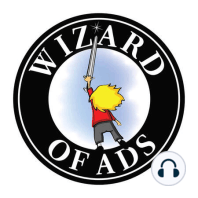3 min listen
Answer 13 Again
ratings:
Length:
8 minutes
Released:
Jul 5, 2010
Format:
Podcast episode
Description
I was explaining to my apprentices the difference between cost-based accounting and customer-based accounting. “Cars in 1908 sold for about $2,500 apiece. Nearly 2,000 entrepreneurs became car builders between 1886 and 1908 and each of them began with the question, ‘How can I build a stronger, faster, more desirable car?’” But none of them could build and sell a car for less than $2,500. Consequently, cars sold in small numbers and only to the very rich.But Henry Ford wasn’t product-focused, he was customer-focused. Henry asked, “At what price could I sell a lot of cars… a whole lot of cars?” Henry decided upon the price of $849 and it became his non-negotiable, his North Star.Designs A through S were impossible to build and sell for $849 so those designs were scrapped. But the Model T at $849 swept America like a prairie fire on a windy day and left 15 million Americans smiling happily in the smoke of identical, black cars. (The bestselling car in the world today sells about 400,000 units per year worldwide, so 15 million is a lot of cars… a whole lot of cars.)Henry Ford developed the assembly line using the same sort of reverse logic. While visiting a large meat-packing house in Chicago, Henry was impressed with the efficiency of their disassembly line: a pig carcass hung from a hook that rolled along an overhead rail in front of a line of workers, each of whom cut off a piece of pork with a specialized knife. Whoosh. The pig was skeletonized in less than 2 minutes.“Instead of a rail overhead, I’ll have a conveyor belt underneath. And instead of taking off a piece, my workers will add a piece. Instead of ending with a skeleton, we’ll begin with a skeleton.” Whoosh. By 1920 a new Model T rolled out of the factory every 60 seconds and 1 of every 2 cars on earth was a Ford Model T.Sam Walton was Henry Ford with a different haircut. Sam taught his buyers to look at an item and ask, “At what price could I sell a lot of these… a whole lot of these?” Then if the item could be bought for less than that amount, the buyer was told to buy a trainload of them.“Roy, I can corroborate that story.” All eyes turned toward Norm, one of my apprentices. “I was with Fred Meyer in 1980 and Wal-Mart was part of our buying group. A man at the front of the room held up a rug and began explaining its features. The Wal-Mart buyer on my right leaned across to ask the Fred Meyer buyer on my left, ‘How much do you think we could sell those for?’ My buyer whispered back, ‘We don’t yet know what they cost.’ The Wal-Mart buyer cocked his head and responded, ‘What does that have to do with anything?’”Fred Meyer and Sam Walton simultaneously broke the 1 billion-dollar mark in 1980. Fred Meyer now sells 7 billion dollars a year.Wal-Mart sells that much every week.Henry Ford and Sam Walton became ecstatically wealthy because they had an instinctive understanding of Genrich Altshuller’s Answer 13: Do it backwards.Bad marketing is focused on the product. Good marketing is focused on the customer. It’s a subtle shift in perspective, but a vital one.Wizard Academy graduate Kary Mullis understands Answer 13, just like Henry and Sam. “Geneticists were looking for a needle in a haystack, so I said, ‘Why not turn the haystack into needles?’” The year was 2004. Kary was telling me how he invented Polymerase Chain Reaction (PCR,) the scientific breakthrough that won him the Nobel Prize and opened the door to genetic research.Kary then showed me a scale model of a new, organic molecule and said he was using that same inverted perspective – Answer 13 again – to eliminate bioterrorism. “We know all about this powerful immuno-reaction because we’ve been suppressing it during heart-valve transplants for...
Released:
Jul 5, 2010
Format:
Podcast episode
Titles in the series (100)
A World Without Oil by Wizard of Ads Monday Morning Memo
